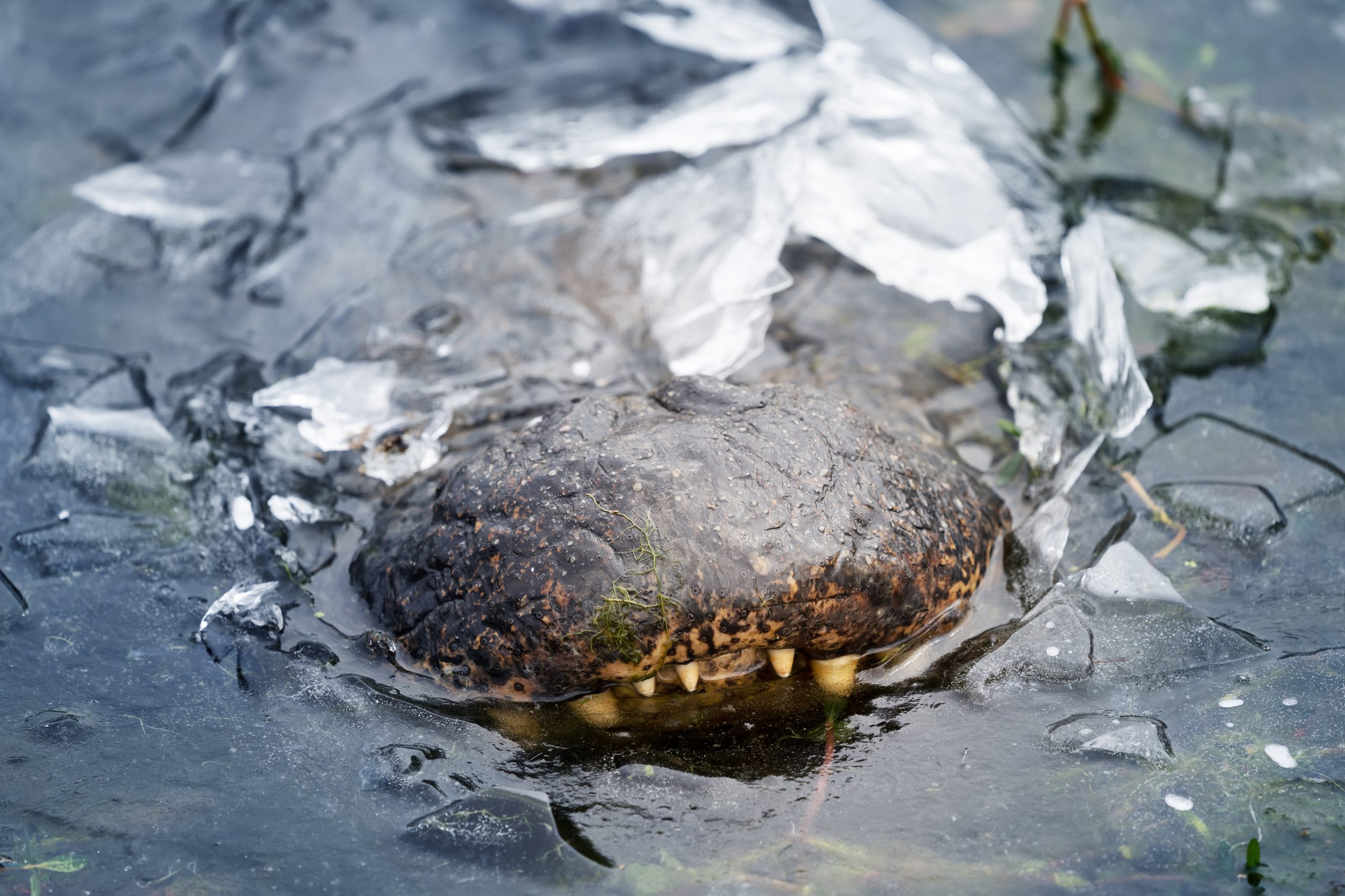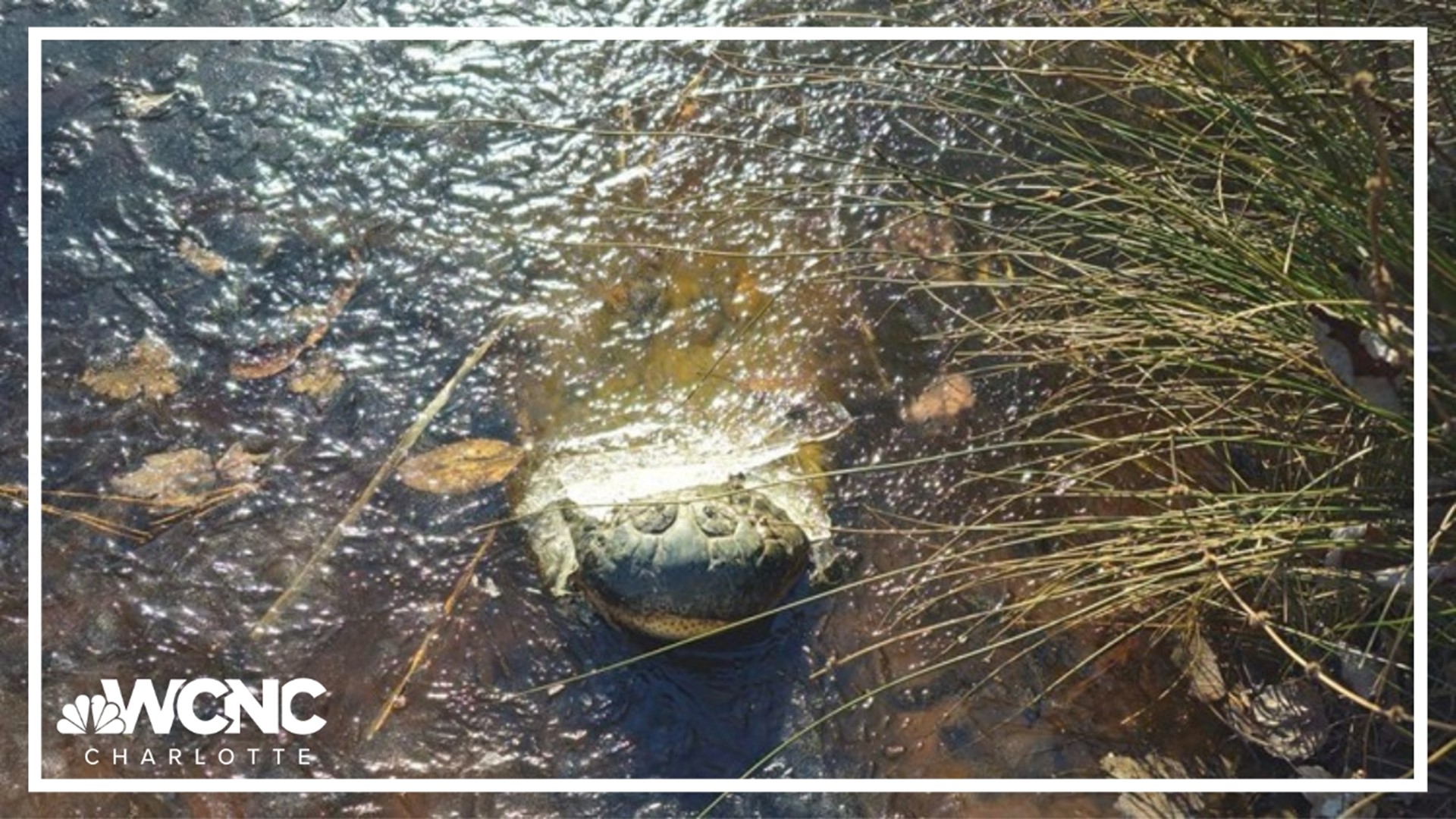Frozen Alligators In North Carolina: The Wild Survival Story That'll Blow Your Mind
Imagine this: You're walking by a swamp in North Carolina during a freezing winter, and you see something that looks like a scene straight out of a sci-fi movie—frozen alligators. Yep, you read that right. These ancient creatures have a trick up their scaly sleeves that lets them survive even the coldest winters.
Now, you might be wondering, "How do frozen alligators in North Carolina even exist?" Well, buckle up, because we're diving deep into the wild world of these cold-blooded survivors. It's not just about surviving; it's about thriving against all odds. And guess what? The science behind it is absolutely fascinating.
This isn't just a random factoid; it's a survival story that shows how nature has a way of adapting to extreme conditions. If you've ever been curious about how animals survive harsh winters, this is your chance to learn from some of the most resilient creatures on the planet. Let's get into it!
- Skip The Games Shut Down The Ultimate Guide To Taking Control Of Your Digital Life
- Age Vijay The Rising Star Of The Entertainment Industry
Table of Contents
- What Are Frozen Alligators?
- The Biology of Alligators
- North Carolina: The Perfect Habitat
- The Brumation Process
- The Science Behind Survival
- Environmental Impact
- Fun Facts About Frozen Alligators
- Threats to Survival
- Conservation Efforts
- Conclusion
What Are Frozen Alligators?
Alright, let's break it down. Frozen alligators in North Carolina aren't exactly frozen solid like an ice cube. Instead, they've mastered a technique called brumation, which is kinda like hibernation but for cold-blooded animals. During super cold spells, these gators can slow down their metabolism so much that they appear frozen, sticking their noses out of the ice to breathe.
Think about it—these creatures have been around for millions of years, and they've evolved some pretty cool tricks to make it through tough times. North Carolina's winters might not be as brutal as, say, Alaska, but they're still tough enough to challenge most animals. So, how do these alligators pull it off?
Why Do Alligators Freeze?
It's all about survival. When the temperature drops, water bodies can freeze over, trapping animals beneath the ice. But not our gator friends! They've figured out a way to stay alive by slowing everything down—heart rate, breathing, digestion, the works. It's like they hit the pause button on life until the weather warms up again.
- Bili Blanco The Ultimate Guide To The Rising Stars Career Life And Influence
- Adam Levine Still Married A Closer Look At His Relationship Journey And Everything Inbetween
The Biology of Alligators
Let's talk biology for a sec. Alligators are reptiles, which means they're ectothermic—or cold-blooded. Their body temperature depends on the environment around them. In warm weather, they're all about soaking up the sun, but when things get chilly, they have to get creative.
Alligators have a superpower that most animals don't: they can regulate their body functions to survive in extreme conditions. Their lungs are specially designed to allow them to breathe while submerged, and their strong tails help them navigate through icy waters. Plus, they've got a thick layer of fat that acts as insulation during the colder months.
Key Features of Alligator Biology
- Ectothermic metabolism
- Specialized lungs for underwater breathing
- Thick fat layer for insulation
- Strong tail for swimming
North Carolina: The Perfect Habitat
North Carolina might not be the first place you think of when you hear "alligator habitat," but it's actually one of the northernmost ranges for these creatures. The state's wetlands, swamps, and rivers provide the perfect environment for alligators to thrive—most of the time, anyway.
During the winter, things can get dicey. Temperatures can drop below freezing, and water bodies can freeze over. But here's the thing: alligators have adapted to this environment over thousands of years. They know when to slow down and conserve energy, and they know how to position themselves to survive even the iciest conditions.
Why North Carolina?
North Carolina's climate is diverse, ranging from mild coastal areas to cooler mountain regions. This diversity makes it an ideal place for alligators to test their survival skills. Plus, the state's wetlands are teeming with fish, birds, and other prey, providing plenty of food during the warmer months.
The Brumation Process
Now, let's dive into the nitty-gritty of brumation. When the temperature starts to drop, alligators begin to slow down. They stop eating, reduce their activity, and find a safe spot to ride out the cold. If the water freezes over, they'll stick their noses through the ice to create breathing holes.
During brumation, their metabolism drops to almost nothing. Their heart rate slows, and they barely move at all. It's like they're in a state of suspended animation, waiting for the warmth to return. And when it does, they wake up and go back to their normal lives, ready to hunt and reproduce.
Steps in the Brumation Process
- Reduced activity and feeding
- Seeking shelter in shallow waters
- Creating breathing holes in ice
- Slowing down metabolism and heart rate
The Science Behind Survival
The science behind alligator survival is mind-blowing. These creatures have evolved over millions of years to adapt to changing environments. Their ability to slow down their metabolism is a result of genetic adaptations that allow them to survive in extreme conditions.
Research has shown that alligators can survive for weeks without eating during brumation. Their bodies are so efficient that they can break down stored fat to meet their energy needs. And when it comes to breathing, their lungs are designed to extract oxygen from water, allowing them to stay submerged for extended periods.
How Do They Survive Without Oxygen?
Here's the kicker: alligators don't actually survive without oxygen. They still need to breathe, which is why they create breathing holes in the ice. But their bodies are so efficient that they can slow down their oxygen consumption to almost nothing, allowing them to survive in low-oxygen environments.
Environmental Impact
Now, let's talk about the bigger picture. The survival of alligators in North Carolina has a significant impact on the local ecosystem. These creatures play a crucial role in maintaining the balance of wetland habitats. By controlling the population of fish and other prey, they help prevent overpopulation and ensure the health of the ecosystem.
But climate change is throwing a wrench into the works. Warmer winters and changing weather patterns are affecting the timing and duration of brumation, which could have long-term consequences for alligator populations. Scientists are keeping a close eye on these changes to understand how they might impact the future of these amazing creatures.
Climate Change and Alligator Survival
Climate change is a real threat to alligators and other wildlife. Warmer winters could disrupt the brumation process, causing alligators to wake up too early or not enter brumation at all. This could lead to increased mortality rates and a decline in population numbers. It's a reminder of how important it is to protect our planet and its incredible biodiversity.
Fun Facts About Frozen Alligators
Let's lighten things up a bit with some fun facts about frozen alligators:
- Alligators can survive for weeks without eating during brumation.
- They can create breathing holes in ice using their strong noses.
- Adult alligators can grow up to 14 feet long and weigh over 1,000 pounds.
- They have one of the strongest bites in the animal kingdom.
- Alligators have been around for over 150 million years!
Threats to Survival
While alligators are tough survivors, they do face threats to their survival. Habitat loss, pollution, and climate change are all factors that could impact their ability to thrive in the wild. Human activities, such as wetland development and hunting, also pose a risk to alligator populations.
Conservation efforts are underway to protect these amazing creatures and their habitats. National parks, wildlife refuges, and protected areas provide safe spaces for alligators to live and reproduce. But it's up to all of us to do our part in protecting the environment and the creatures that call it home.
What Can You Do?
There are plenty of ways you can help protect alligators and their habitats:
- Support conservation organizations that work to protect wetlands and wildlife.
- Reduce your carbon footprint to combat climate change.
- Avoid using pesticides and other chemicals that can pollute waterways.
- Respect wildlife and their habitats when visiting natural areas.
Conservation Efforts
Conservationists are working hard to protect alligators and their habitats. Programs like the North Carolina Wildlife Resources Commission focus on monitoring alligator populations and implementing measures to ensure their survival. Educational outreach and community involvement are also key components of these efforts.
By raising awareness about the importance of alligators and their role in the ecosystem, we can help ensure that these incredible creatures continue to thrive for generations to come. It's a team effort, and every little bit helps.
Conclusion
So, there you have it—the amazing story of frozen alligators in North Carolina. These creatures have adapted to survive some of the toughest conditions nature can throw at them, and they continue to amaze scientists and nature enthusiasts alike. But their survival depends on all of us taking action to protect their habitats and the environment as a whole.
Next time you're out exploring the wetlands of North Carolina, take a moment to appreciate these incredible creatures. And don't forget to share this article with your friends and family to spread the word about the importance of conservation. Together, we can make a difference!



Detail Author:
- Name : Dr. Modesto Marks
- Username : maribel30
- Email : lilyan00@hotmail.com
- Birthdate : 1991-10-12
- Address : 1275 Noemi Inlet Apt. 831 New Jacinthemouth, NH 32330-6058
- Phone : 726.673.5298
- Company : Satterfield Group
- Job : Mapping Technician
- Bio : Eveniet excepturi vero sed qui. Ea temporibus aut ad vero repellat. Ut veritatis sint ut aut vel voluptatem exercitationem. Repellendus consequatur est laborum non.
Socials
facebook:
- url : https://facebook.com/bruenk
- username : bruenk
- bio : Rerum odit aliquid in quam consequatur magnam. Soluta omnis sed ratione cumque.
- followers : 167
- following : 681
linkedin:
- url : https://linkedin.com/in/krisbruen
- username : krisbruen
- bio : Sit veritatis laudantium illo.
- followers : 3768
- following : 313